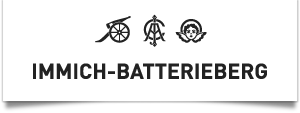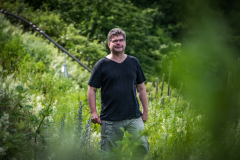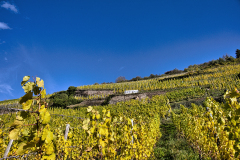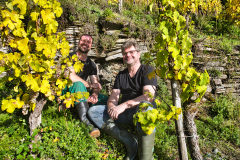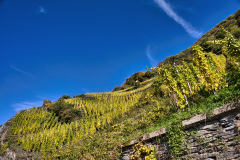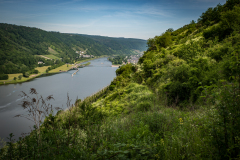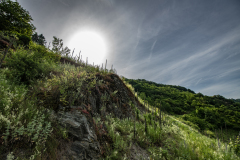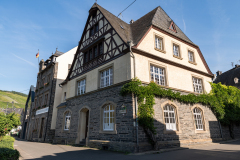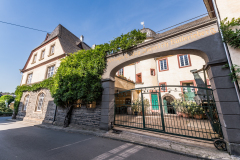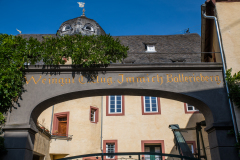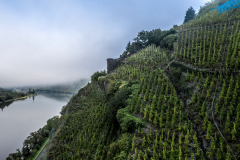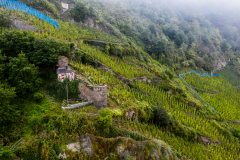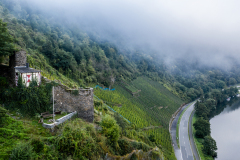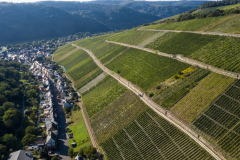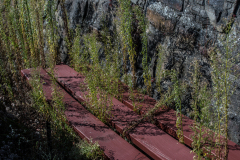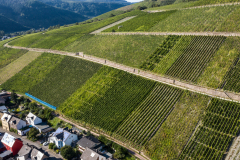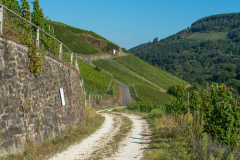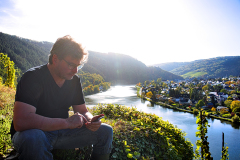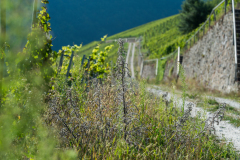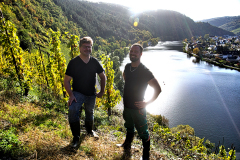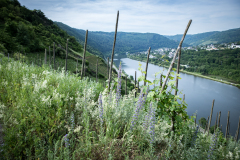Images and Impressions
The Vineyard
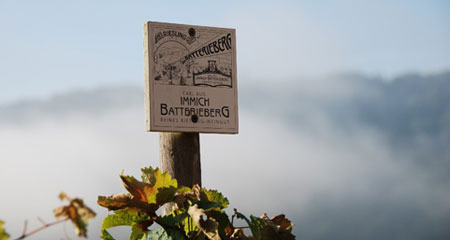
Batterieberg Weinberge
Die Weine
„Gutsweine – präzise, frisch, leicht, elegant“
CAI Riesling Kabinett Trocken, leicht mit viel Finesse und Spannung – unsere Interpretation eines komplexen, aus mineralischen Schieferlagen stammenden, Rieslings. Ein Kabinett Klassiker wie ihn nur die Mosel hervorbringen kann!
Detonation Riesling
Eine Selektion aus besten Mosel-Lagen bringen einen expressiv-explosiv, kraftvollen, und dennoch filigranen Riesling hervor. Ein Sea-Food Klassiker!
Ortsriesling
Escheburg Riesling – Alte Reben, die Essenz aus vier Enkircher Spitzenlagen, benannt nach unserem Gutsgebäude, verleiht diesem Wein viel Druck und Eleganz aus über 60 Jahre alten Reben. Immer schon ein kleiner Grand Cru!Erste Lage / Grosse Lage
Enkircher Steffensberg Riesling Eine reine Südlage direkt hinter dem Enkircher Ortskern. Diese steilen Schieferhänge zeichnen sich durch tiefgründige, kupferrote Böden mit einer sehr guten Nährstoff- und Wasserversorgung aus. Die kraftvollen aber eleganten Weine öffnen sich zügig und erweisen sich als universelle Essensbegleiter.Trabener Zollturm Riesling Eine alte Zollfeste auf dieser extremen Steillage setzt eine imposante Landmarke für unsere jüngste Weinbergserwerbung. Das Monument aus grauem, quarzithaltigem Schiefer ist nur wenige hundert Meter von der Enkircher Ellergrub entfernt, gehört aber dennoch schon zu Traben-Trarbacher Gebiet. Ein opulent-rassiger Spitzenklasse Riesling der viel Zeit braucht.
Enkircher Ellergrub Riesling Unsere steilste und größte Enkircher Lage befindet sich etwa 200 Meter flussaufwärts des Batteriebergs im Starkenburger Fels. Geprägt durch den feinerodierten, dunklen („blauen“) Schiefer, findet man hier die wohl substilsten, feinsten und elegantesten Riesling Weine unseres Weinguts. Stets versehen mit einer seidigen Textur und belebender Klarheit, erweisen sie sich als große Langstreckenläufer.
Enkircher Batterieberg Riesling - Monopol Die Monopollage des Weinguts liegt, umrandet vom Enkircher Zeppwingert, im Starkenburger Fels zwischen Enkirch und Traben-Trarbach. Geprägt duch Felsvorsprünge und alte Weinbergsmauern dokumentiert dieser Weinberg ein Stück Weinbergshistorie der Mosel. Zwischen 1841 und 1845 wurden im Weinberg, zur Urbarmachung und besseren Bewirtschaftung, einige Felsnasen mit Hilfe von sogenannten Sprengbatterien zerlegt. Prägend für diese einzigartige Lage ist hier der graue Schiefer mit einem ungewöhnlich hohen Anteil an Quarziten. Diese Riesling Weine präsentieren sich kraftvoll, fest und vielschichtig mit einer legendären Haltbarkeit über viele Jahrzehnte hinweg.
Enkircher Zeppwingert Riesling Im Enkircher Zeppwingert wachsen, auf dunkelgrauem Schiefer, wohl die ältesten Reben des Weinguts. Die tiefen Wurzeln, die weit in das Erdreich hineinragen, bringen sehr feste, maskulin-kräfte Riesling Weine mit viel Ausdruck und hoher Lagerfähigkeit. Regelmässig auch die Quelle unserer Reserve Weine!
The wine cellar
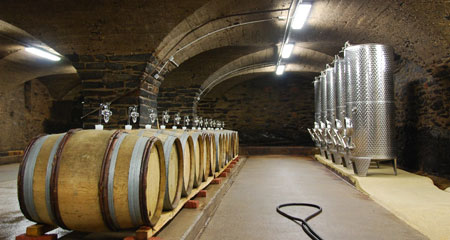
Kellerfässer und Stahl
What that means for us concretely is an even clearer orientation toward dry Riesling, a style long well-cultivated here, even when the rest of the area was committed to sweeter wines. We stand for a very pure, unadorned, and rather powerful style of Riesling, with ripe, moderate acidity and with the pronounced structure intended for a long aging potential – and also, of course, for a certain ripeness requirement, especially for our top wines.
Our wines are raised without a heavy hand, primarily in barrels (but also in stainless steel), and are left for a long time on their lees. We use no cultured yeast, no enzymes, no protein stabilizers, and no clarifying agents. We do not chaptalize, concentrate, or de-acidify and place ourselves in the tradition of natural wines that – until the 1971 reform of the German wine law – was indicated on the bottle by the phrase naturrein.
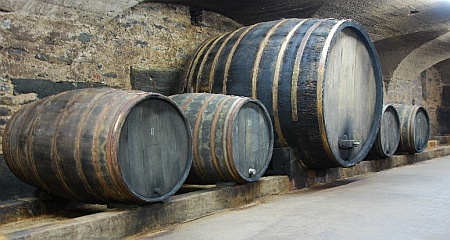
Weinkeller
Vintage
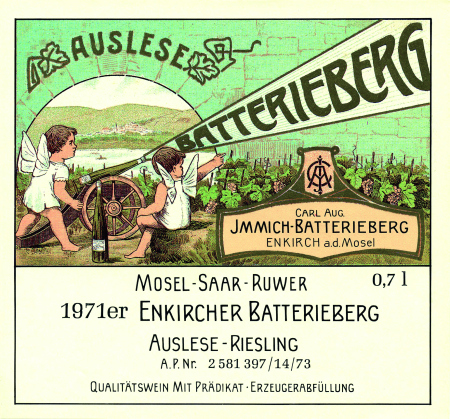
Batterieberg 1971
What vintage am I interested in today-powerfully warming, playfully mineral-driven, or viscous and ripe? How are the 1998s showing? Or the 2003s? What about the 1973s? For experienced wine lovers, the pleasure of the vintage game is second only to the wine itself.It is in the vintage that the heart of the wine beats. It decides the expression: lightness or weight, coolness or warmth, strength or softness, gracefulness or rusticity, transience or longevity. In all cases, these are subject to the conditions of site, grape variety, and winemaking methods!In the vintage lies hidden the variation that separates artisanal wines from mass-produced wine, the curiosity that every year allows us to await with excitement the first must and then the first fully fermented wine, the pleasure of observing the changes as the wine ripens in the bottle. We have no interest in leveling out those differences, neither with regard to the contents, through technical attempts at manipulation (our wines, of course, are never chaptalized, concentrated, or de-acidified) nor with information, by way of concealment of the vintage or minimization of the vintage’s influence.Every year you will get from us wines which document the history of their creation and can tell us something of frost, heat, flowering, rain, harvest, and decisions both good and bad…We want to document our pleasure and our interest in authenticity and variation with a particularly notable representation of the vintage on our label. Each vintage will get its own color, which we believe (fully aware of the limits of such associations) represents particularly well a given year’s character.
The history of the estate
According to archaeological estimates, the foundation of the building dates from the second half of the 9th century. Especially remarkable is the cellar’s load-bearing basalt pillar, which was „recycled‘ from a nearby Roman estate.
In the 12th Century the estate was ceded as a fief to Prince von Esch (hence to day’s Escheburg) and was then remodeled and expanded. The right wing of the property, the „Franzenhaus,‘ was not built until the 16th Century and the „Herrenhaus,‘ richly adorned in the Mosel-Frankish style and which today makes up the left wing, did not appear until the early 1900s.
It was the Immich family – among the oldest winemaking families on the Mosel, with a history that spans from 1425 through 1989 – that was especially crucial to the history and the development of the estate. We have them to thank for our most famous site, the Batterieberg, which between 1841 and 1845 was formed into one of the Mosel’s top sites by way of ceaseless rounds of dynamite. Batterieberg, along with the older top-tier sites Steffensberg, Ellergrub, and Zeppwingert, are all steep slate slopes and all achieved the highest ranking in the Prussian Vineyard Classification of 1868. Today they comprise the heart of the estate.
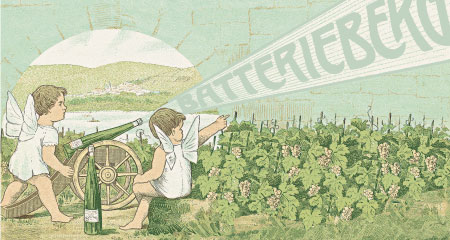
Batterieberg Etikett
The people in the winery
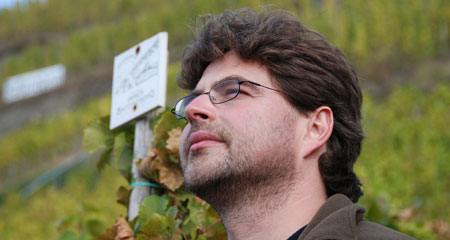
Gernot Kollmann
Since 2004 he has consulted at several estates, both in Germany and abroad, and has enjoyed high praise for his wines in the national and international press.
In 2009 Gernot assumed responsibility for the direction and the winemaking at Weingut Immich-Batterieberg. He stands for a powerful, sometimes somewhat wild, „unstyled‘ style of Riesling (cultured yeasts are renounced for all wines), more on the dry side, and as a rule not intended for immediate consumption.
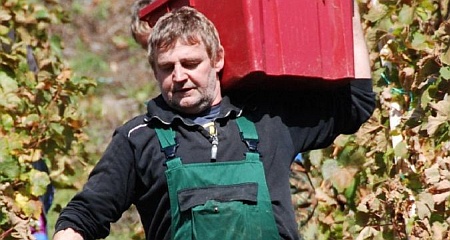
Karl Höhlein
